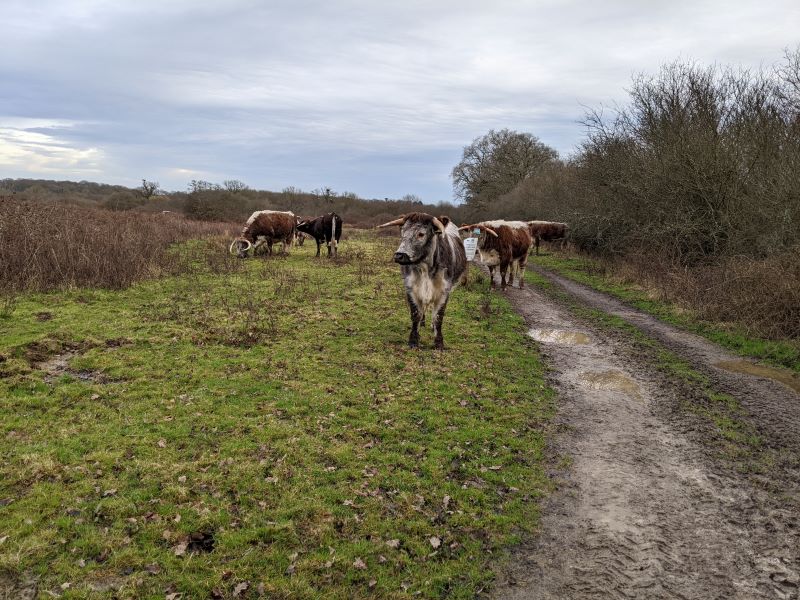
Health of domesticated cattle in rewilding
Domesticated cattle are used in rewilding projects to utilise their ecological impacts upon these systems. Human expectations, and therefore health measures, of these animals differ from those of farmed livestock.

Challenge
Rewilding is an increasingly common practice, undoubtedly having some role to play in conservation. Domesticated animals, including cattle and horses, are routinely used in these projects as proxies for species which cannot be introduced, but which share common ecosystemic functions (1). No dedicated guidelines exist for managing these animals for either their own health, or that of the ecosystem. Herd health planning for production animals measures health using metrics related to social expectations of these animals (e.g. milk production) rather than to intrinsic biological factors (2). Livestock not primarily used for production purposes ought therefore to have different health parameters. This project aims to establish baseline expectations of cattle for cattle in a rewilded setting, upon which to base future health planning.
The primary project aim is to establish a network of stakeholders having an interest in rewilded livestock health. Secondly, the project will garner perspectives on ideal characteristics of these populations to feed forward into future health planning. The importance of early stakeholder engagement in wildlife management has been previously established (3).
How you can help
We would like to hear from anyone who works/interested/or affected by rewilding initiatives
Solution
Online surveys will explore the factors and relationships within the rewilding system including descriptions of how rewilded livestock health influences them, and identifying other potential stakeholders. Participation will be snowballed based upon these responses and a stakeholder and system map will be created. Participants will then be asked about their expectations of livestock, identifying key performance criteria that can contribute to the development of a livestock health plan.
Impact
Project outcomes will be taken forward to further work developing a framework for health planning in rewilded livestock, with implications for both the welfare of these animals, and the ecological success of rewilding projects.
1 Gordon, I.J., Pérez-Barbería, F.J. and Manning, A.D., 2021. Rewilding lite: Using traditional domestic livestock to achieve rewilding outcomes. Sustainability, 13(6), p.3347.
2 Stephen, C., 2022. What Is Wildlife Health?. In Wildlife Population Health (pp. 3-12). Cham: Springer International Publishing.
3 Leong, K. and Decker, D.J., 2020. Human dimensions considerations in wildlife disease management (No. 15-C8). US Geological Survey.
